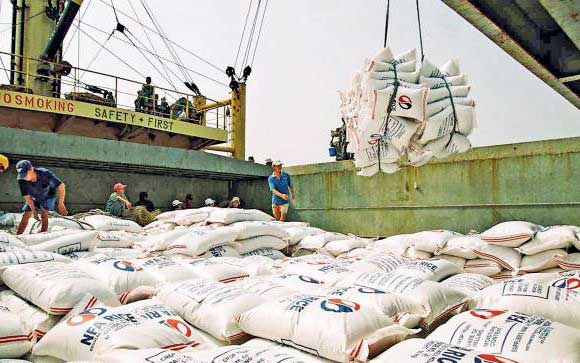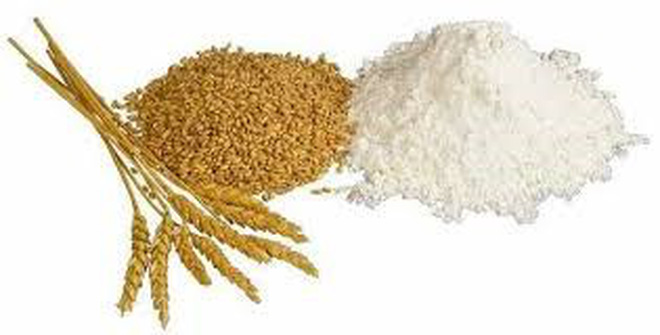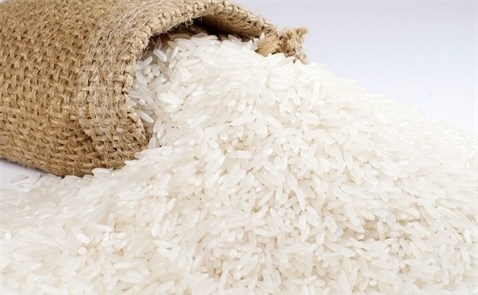Rice exports: Small businesses look forward to “unbind”
The Ministry of Industry and Commerce is proposing to the Government a new decree replacing Decree 109/2010 / ND-CP on rice export business which is expected to take effect from January 1, Expect to “unbind” the business community of rice exports, especially small and medium enterprises.

According to the draft amendments and supplements to some articles of Decree 109/2010 / ND-CP, enterprises are free to export rice without restricting the quantity and supplementation of regulations on commodities. Organic rice, rice, fortified rice, medicinal rice, traders are not limited in quantity, repealing Articles 18 and 19 on the criteria for registration of rice export contracts and The floor price when participating in export …. This is a good sign for businesses to export rice today.
However, in 2017, Decree 109 remains in effect. Since early June, the Ministry of Industry and Trade has signed a memorandum of understanding on export rice trade with the Ministry of Food Bangladesh, which is valid until 2022.
Accordingly, Vietnam exports 1 million tonnes of rice to Bangladesh every year. This is a great opportunity for Vietnam to boost the export of this spearhead food industry, and for the rice business to promote the brand building, link with developed farmers.
According to the detailed provisions of Decree 109/2010 / ND-CP on rice export, the Vietnam Food Association (VFA) has appointed the Northern Food Corporation and the Southern Food Corporation Join this activity. During the implementation of the transaction and signing, other rice exporters must seek commercial contracts in other markets.
According to Pham Thai Binh, General Director of Trung An Co Ltd (Can Tho), some articles of Decree 109/2010 / ND-CP have accidentally tied rice export enterprises, not creating conditions for businesses. Development karma.
When rice export activity involving the Government in seeking contracting is a good practice for Vietnamese agriculture, it should also facilitate all rice exporters to participate in This new activity could boost trade in centralized contracting markets.
In the event of a food shortage in the country, the new government mobilizes the business community to stop exporting freely. Therefore, the new draft will “untie” the business in finding and entering into export contracts.
At present, the production and export of rice requires a close chain linkage to ensure that producers can live on their plots. However, when exporters have difficulty finding the market, rice farmers will also be affected, Binh emphasized.
When there is a change in the regulations on storage facilities, milling facilities, food safety criteria in rice processing, extending to all businesses that are able to participate, these criteria have helped the activities Supporting the development of the rice sector, while reducing the investment cost of enterprises with weak capital but high quality products and small quantity, expanding the circulation of quality rice in Vietnam. – Mrs. Dang Thi Lien, Director of Long An Food and Foodstuff Co., Ltd. shared.
Talking about this, Mr. Vo Minh Khai, General Director of Organic Farfood Company – Healthy Food (Ca Mau) said that during the past years, enterprises exporting small quantities of rice, but products High quality has been “blocking” the way to send rice grain to the world.
To be able to export, these businesses must “stick” to large enterprises as intermediaries. The changes in the new draft will create a more level playing field for exporters, and the market access will be broader and more open.
Enterprises have the ability to invest, produce high quality products will easily develop, is known world market. This also means that Vietnamese quality grain will also resonate and compete with higher quality Thai and Cambodian rice than today.
Vietnam’s rice industry has brought rice to the world market for nearly 30 years, with the first volume of 1.4 million tons of rice, reaching a turnover of $ 310 million in 1989. So far, the rice sector exports 4.9 million tons, turnover of 2.1 billion USD in 2016 but Vietnam rice has not confirmed the brand in the world market.
To this point, world customers only know about Vietnamese rice through 5% broken rice and 25% broken rice and no specific name to mention, the world consumers know the rice Vietnam.
Pham Thai Binh said that it was because of the strictness of rice export regulations that made rice grain difficult to circulate. At the same time, Vietnamese rice is not branded, so it has happened that many kinds of delicious rice of Vietnam circulated on the world market by other countries.
In fact, if compared with the quality of Thailand’s rice and Cambodian rice, Vietnam’s rice is exported to foreign countries with different types such as ST, Jasmine, Hoa Sua, Loc Thua … high quality for better rice. But the output is small, not enough to meet the importer’s requirements, even there is not enough supply for the domestic market and no tendency to export.
Therefore, in order to build up the brand name of Vietnam rice in line with the quality, the immediate task is to produce quality products, while the rice grain is easily transported, the brand of rice has been successful. Le Thanh Tung, deputy head of the food and foodstuffs division, Crop Department shared.
The draft decree on rice export effective January 1, 2015 will create more conditions for these types of rice to reach the world market when rice exporters directly contact importers, Avoid the phenomenon of mixing rice, reducing the quality of rice.
This is also a method to help Vietnamese rice branding based on the actual quality of Vietnamese rice, avoid fraud in buying and selling. At the same time, the Government should also have policies to encourage enterprises to produce high quality rice, high value, selected by the world consumers, thus promoting business development. Quality of rice grains.
This quality makes a good rice brand for Vietnam, said Vo Minh Khai, General Director of Organic Fruits Company – Healthy Food.
The new regulation on rice export is more open, enabling the rice industry in general and rice exporters in particular to develop, especially small and medium enterprises, to export rice in small quantities. High volume, high value, affirmed the brand of Vietnam rice.
This is the only way to reduce the status of Vietnam’s only raw and bulk exports as today, said Vo Hung Dung, director of the Vietnam Chamber of Commerce and Industry in Can Tho.
Thus, when there is a change in the mechanism of open policies, mobilize in accordance with the market mechanism, promote the self-mobilization, development, affirmation, brand prestige of exporters before consumers. International is also a way of affirming the brand of Vietnam rice.




